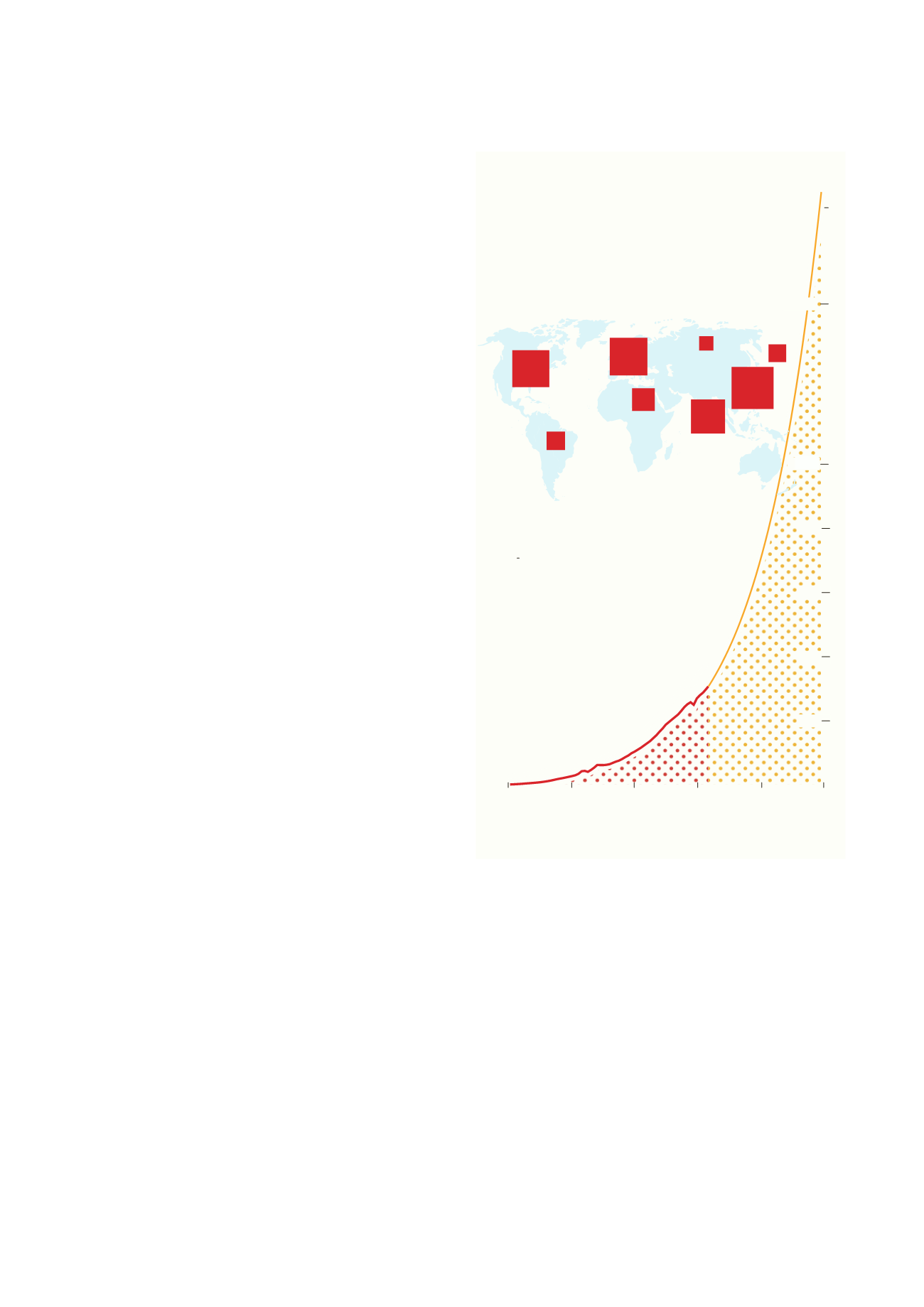

11
Marine Litter
Vital Graphics
DRIVERS
nearly all traditional materials and they offer qualities
unknown in naturally occurring materials. Plastic products
and technologies provide huge benefits in every aspect
of life, to the point where life without them is almost
unthinkable. Many sectors of the economy use plastics,
including food and water packaging, a myriad of consumer
products like textiles and clothing, electrical and electronic
devices, life-saving advanced medical equipment and
reliable and durable construction materials (Andrady and
Neal, 2009; Thompson et al., 2009).
Plastic is convenient as a manufacturing material due to its
durability, flexibility, strength, low density, impermeability
to a wide range of chemical substances, and high thermal
and electrical resistance. But it is also one of the most
pervasive and challenging types of litter in terms of its
impacts and management once it reaches the marine
environment, where it is persistent and widely dispersed
in the open ocean.
A growing human population, with expectations
of a higher standard of living and generally rising
consumption patterns, is concentrated in urban areas
across the globe. Our current lifestyle entails increasing
consumption of products intended for single use. Plastic
manufacturing and service industries are responding
to the market’s demands by providing low weight
packaging and single-use products without plans for end
of life management.
Plastic packaging is considered one of the main sources of
waste. In Europe, plastic production comes in three broad
categories: about 40 per cent for single-use disposable
applications, such as food packaging, agricultural films
and disposable consumer items; 20 per cent for long-
lasting infrastructure such as pipes, cable coatings
and structural materials; and 40 per cent for durable
consumer applications with an intermediate lifespan,
such as electronic goods, furniture, and vehicles (Plastics
Europe, 2015). In the US and Canada, 34 per cent of plastic
production was for single-use items in 2014 (American
Chemistry Council, 2015). In China in 2010, the equivalent
figure was 33 per cent (Velis, 2014). However, when we
look at the plastic found in waste streams, packaging
accounted for 62 per cent of the plastic in Europe in 2012
(Consultic, 2013). This confirms that plastic intended for
a single-use product is the main source of plastic waste,
followed by waste derived from intermediate lifespan
goods such as electronics, electrical equipment and
vehicles (Hopewell et al., 2009).
Marine plastic litter, like other waste or pollution problems,
is really linked to market failure. In simple terms, the
price of plastic products does not reflect the true cost of
disposal. The cost of recycling and disposal are not borne
by the producer or consumer, but by society (Newman et
al., 2015). This flaw in our system allows for the production
and consumption of large amounts of plastic at a very low
“symbolic” price. Waste management is done “out of sight”
from the consumer, hindering awareness of the actual
cost of a product throughout its life.
Sustainable long-term solutions to stop increasing
amounts of plastic waste from leaking into the
environment require changes to our consumption and
production patterns. This is a complex task. In order to
succeed, campaigns targeting behaviour change need to
...and future trends Global plastic production... Million tonnes Million tonnes, 2013 North America Latin America Middle East and Africa Asia (excluding China and Japan) Japan China Commonwealth of Independent States EU 50 7 62 11 41 18 12 49 1950 1970 1990 2010 2030 2050 1 000 800 600 400 200 1 800 1 500 Source: Ryan, A Brief History of Marine Litter Research, in M. Bergmann, L. Gutow, M. Klages (Eds.), Marine Anthropogenic Litter, Berlin Springer, 2015; Plastics Europe

















